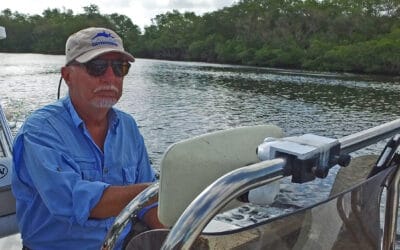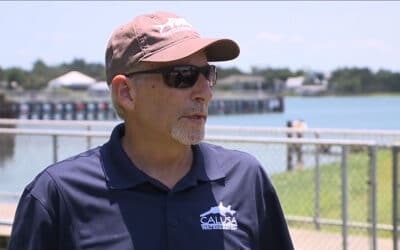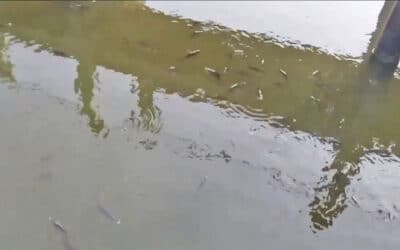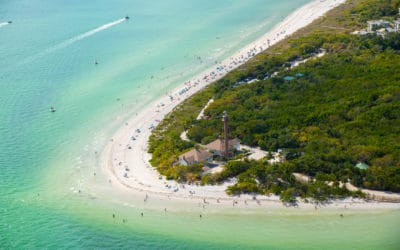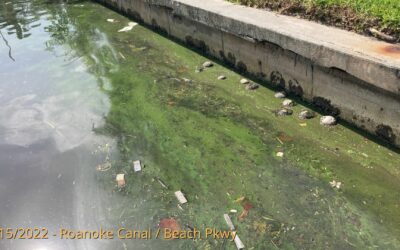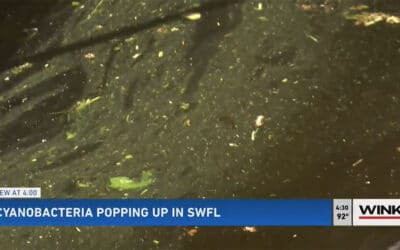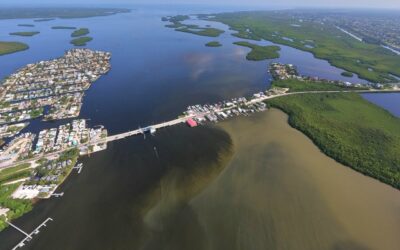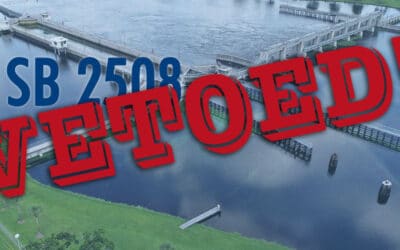Calusa Waterkeeper
In the News
An Update from Calusa Waterkeeper Board President, Jim Watkins
A special update on the status of Calusa Waterkeeper from Board President, Jim Watkins
Lake Okeechobee sees 240 Square Miles of Blue-Green Algae
Lake Okeechobee is seeing about 240 square miles of Blue-Green Algae on the north, west, and south shores. That is about a 30% increase over the last two weeks. The Army Corps of Engineers began to release water from Lake Okeechobee into the Caloosahatchee system.
Milky White-Colored Water & Fish Kill in Matlacha Pass
We are learning more about what caused a fish kill in Matlacha Pass last week. NOAA says the fish likely died because of low oxygen levels in the water. The water’s white color is caused by sulfur particles that precipitate from H2S (hydrogen sulfide) produced from the bacterial decomposition of the macroalga Caulerpa.
Heavy Rains Lead to High Flows in the Caloosahatchee
A large algae bloom is lingering along the western rim of Lake Okeechobee, but the Caloosahatchee River looks relatively healthy and experts don’t expect to see a devastating blue-green algae bloom this summer.
What is the Right to Clean Water Initiative?
Calusa Waterkeeper supports the Right to Clean Water constitutional amendment ballot initiative. The following information has been adapted from their brochure.
Blue-Green Algae Blooms Spotted in Multiple Cape Coral Canals
Blue-green algae has been found in at least 5 different canals in southeast Cape Coral. The Calusa Waterkeeper, John Cassani, said stormwater runoff and warmer waters are likely to blame. He advises nearby residents to do their best to stay inside and change their A/C filters.
Cape Coral sees Blue-Green Algae pop up in Multiple Canals
Blue-green algae have once again been found in Cape Coral canals. Calusa Waterkeeper John Cassani says these blooms are happening more and more. There are algae in five separate canals in Southeast Cape Coral.
Harmful Algae Bloom Task Force Forms on Pine Island
Calusa Waterkeeper ranger Sue Dahod has begun a new task force that will meet monthly to discuss local water conditions, changes in water quality and any harmful bacteria detected through testing. Invitations to the Harmful Algae Bloom Task Force included members of the Pine Island Pandemic Task Force, Calusa Waterkeeper John Cassani and other Calusa Waterkeeper rangers.
Health Department and Advocates Monitor Lake O and Caloosahatchee Cyanobacteria
A month into the summer rainy season, the signs have begun appearing at popular Southwest Florida waterways. Sporting red or yellow tops depending on the threat level, they warn would-be recreators about cyanobacteria, also called blue-green algae.
Innovative Air Monitoring Device to be Presented at the Waterkeeper Alliance Global Conference in Washington
After pioneering a new monitoring device and releasing initial results, Calusa Waterkeeper board member Manuel Aparicio IV, PhD, will be presenting a workshop, “Airborne HAB Monitoring” about this ground-breaking research at the Waterkeeper Alliance Global Conference in Washington D.C.
A Win for Water: SB 2508 Vetoed
SB 2508 was easily one of the worst water related bills we’ve seen since 2016, and we should all be very grateful it will not become law.
Gov. DeSantis Announces $1.2 Billion Water Protection Plan from Fort Myers Beach
Gov. Ron DeSantis announced a $1.2 billion budget approval for Everglades restoration and protection of water resources from Fort Myers Beach inside Doc Ford’s Rum Bar & Grille on Fisherman’s Wharf.

























